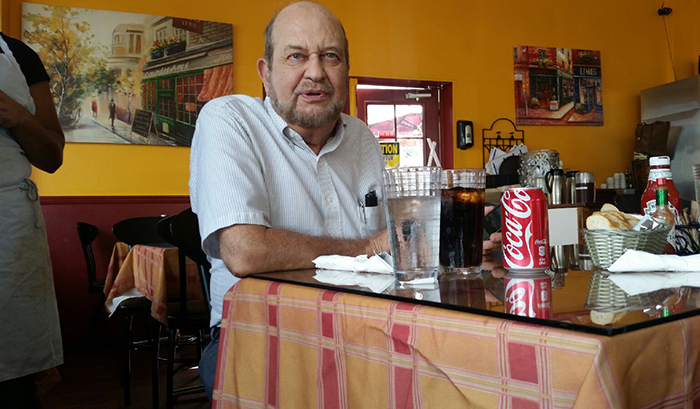On a cloudy Sacramento day in 2001, a low-level aide to Gov. Gray Davis secretly met a representative of the Oracle Corp. software company, accepting a $25,000 check for Mr. Davis’s reelection fund.
A few days earlier, Oracle had received a $95 million software contract to update state computers. The sequence later became emblematic of the “pay-to-play” phenomenon allegedly common under Mr. Davis, a pattern used against him by Arnold Schwarzenegger when Mr. Davis was recalled and thrown from office in 2003, less than one year after his election to a second term.
Anyone who thinks such behavior then disappeared from Sacramento can now see the interesting timing of a long list of corporate donations to the state Democratic Party and Gov. Brown’s 2014 reelection fund released the other day by the Consumer Watchdog advocacy group. The report is called “Brown’s Dirty Hands.” (http://www.consumerwatchdog.org/dirtyhands)
One example: The report says that in November 2011, Mr. Davis – by then a lawyer for Los Angeles-based Occidental Petroleum Corp. – pressured Mr. Brown to fire two oil and gas regulators the company felt were slow to grant injection well permits for hydraulic fracturing (fracking). Two months later, Oxy contributed $250,000 to Mr. Brown’s Prop. 30 tax increase initiative, and shortly after that gave $100,000 to a pet Brown charity, the Oakland Military Institute. This surely looks like old-fashioned pay-to-play.
(Just a few years earlier, former Republican Insurance Commission Chuck Quackenbush was hounded from office for getting insurance companies he regulated to contribute to his own pet charities.)
Another example: In June 2013, tough regulations were dropped from SB4, a bill intended to restrict fracking. The same day, Chevron Corp. gave $135,000 to the Democratic Party. Several months later, Chevron wrote the party a $350,000 check and a week later, the party put $300,000 into Mr. Brown’s reelection campaign fund. On the same day, Chevron plunked $54,400 (the legal maximum) into Mr. Brown’s coffer.
What’s the Difference?
The report’s list goes on. It makes corporate campaign donations under Mr. Brown look at least as dicey as those that helped oust Mr. Davis.
Mr. Brown and his aides don’t deny any of these facts, but dismiss it all as insignificant claptrap. “The governor’s leadership on climate is unmatched; these claims are downright cuckoo,” said press secretary Evan Westrup, who furnished that remark via emails to this and other news outlets. Mr. Brown refused to comment personally.
At least Mr. Davis had the good taste to fire a few aides after his “pay-to-play” pattern was exposed. There have been no such consequences under Mr. Brown.
For example, former Pacific Gas & Electric Co. vice president and lobbyist Nancy McFadden remains the governor’s executive secretary, his top aide, years after it became widely known that she accepted a “departure gift” of more than $1 million from PG&E, signing a “non-disparagement” agreement to get the money. Ms. McFadden, part of whose job is to help vet all of Mr, Brown’s top appointees, cannot do anything that might harm PG&E.
So it was no surprise that emails between PG&E executives and the disgraced Michael Peevey, former president of the state Public Utilities Commission, identify Ms. McFadden as “the go-to person” in the governor’s office when it comes to naming new utilities commissioners. It is also no surprise that Mr. Brown continues refusing to disclose more than 60 emails between him, his office and the PUC from the time the commission saddled consumers with 70 percent of the $4.7 billion cost of closing the San Onofre Nuclear Generating Station.
It is no surprise that state Atty. Gen. Kamala Harris, enthusiastically backed by Mr. Brown for the U.S. Senate, has taken more than four months to rule on the simple question of whether those emails must be disclosed.
“It’s all an extension of the kind of thing that went on under Davis,” said Consumer Watchdog president Jamie Court. “But Brown operates more under the radar and with more stealth.”
Then there’s the pattern of multiple, well-documented government agency lies under Mr. Brown.
It forms a pattern of ethical lapses more pervasive than anything perpetrated under Mr. Davis.
But an attempt to recall Mr. Brown when he has barely two years left in his final term would likely prove futile, besides being a waste of time, money and energy.
The important thing is for Californians to understand how unclean their state government now looks and to bear that in mind constantly while considering candidates to become Mr. Brown’s successor.
Mr. Elias may be contacted at tdelias@aol.com. His book, “The Burzynski Breakthrough: The Most Promising Cancer Treatment and the Government’s Campaign to Squelch It,” is now available in a soft cover fourth edition. For more Elias columns, go to www.californiafocus.net








